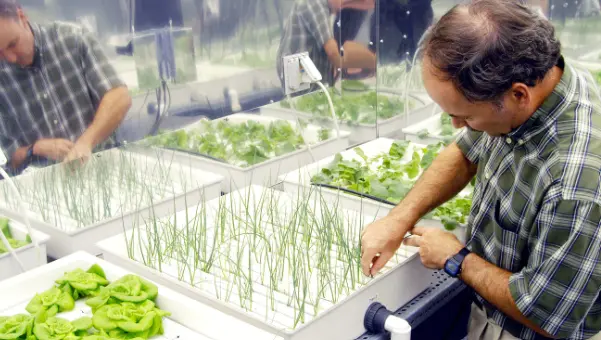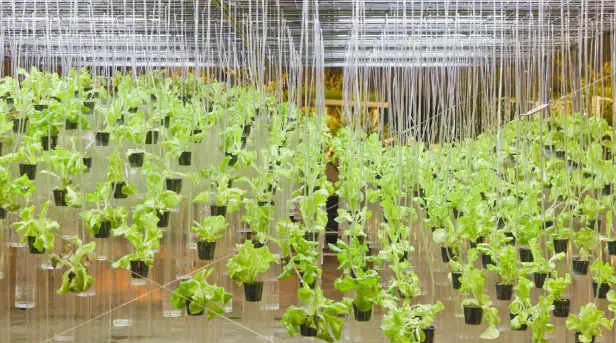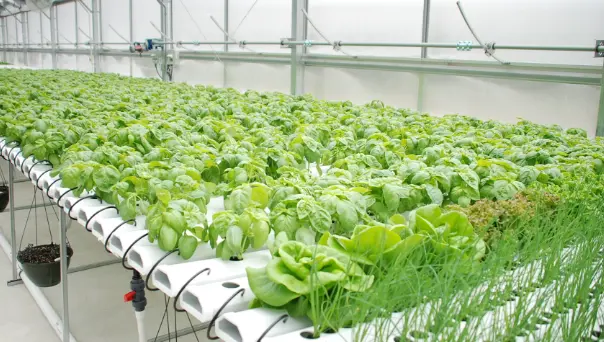How to Start Hydroponic Gardening?
It’s not necessary to be. Hydroponic gardening is often so easy that even a little toddler can accomplish it. There’s even a potential that you tried it when you were younger. Have you ever suspended a potato in a jar of water using toothpicks? If yes, do you recall observing the roots extending into the water before green shoots started to appear above the surface? Hydroponics is that.
When it comes to starting hydroponic gardening, the biggest question is: What is the best substrate for plants with shallow roots? The answer to that question depends on your growing medium. Rock wool, for instance, holds more water than soil and is a good choice for this purpose. You can even use rock wool in place of soil if you find it too heavy. However, this growing medium also requires a slightly different nutrient solution than the soil your plants would typically grow in.
Growing medium
When choosing a growing medium for your hydroponics garden, consider the characteristics of the materials you plan to use. For example, some growers prefer a volcanic rock, such as perlite. It has a low CEC but can also be combined with other growing mediums. Perlite is lightweight and absorbs water reasonably well. It does not, however, retain moisture as well as coconut coir. If you’re looking for a growing medium that’s not too costly, consider using Growstones.
Perlite is one option, but it’s essential to ensure it’s aged so it won’t lose its water-holding capacity quickly. In addition, perlite won’t degrade during the growing season. That means you can use it multiple times without having to worry about it drying out and being ineffective. Another inexpensive, the natural growing medium is rice hulls, which are the shells of rice grains. This material can be purchased cheaply in rice-growing areas and is an excellent option if you’re unsure of what to use. However, it’s important to note that rice hulls will not hold as much moisture as perlite and will not provide nutrients to your plants.
The best growing medium for hydroponic gardening is one that is high in WHC (Water Holding Capacity). This material allows your plants to absorb more nutrients than they would from the soil. You can also use coconut fiber, lightweight expanded clay aggregate, perlite, and Rockwool. However, keep in mind that each type will need a different nutrient solution than the other. The best growing medium for hydroponics is one that suits your growing style and preferences.
Types of hydroponic systems
There are three basic types of hydroponic gardening systems. Hydroponic systems mimic the natural light of the sun. They also require sufficient air circulation so that plants can perform photosynthesis. Most indoor systems include fans and venting systems to facilitate this process. The three types are described below. Each one has its benefits. Those with digital displays will be able to monitor their plants’ growth. A hybrid system uses several types of plants in one container.
The most complicated hydroponic growing system is called the aeroponic system. This technique involves suspending the plant roots within a shallow, light-tight channel. A nutrient solution is continuously circulated over the roots up to twenty-four hours a day. The shallow depth of the liquid allows sufficient oxygenation for the plants. The system also does not require moving parts. It’s also less expensive than some other methods.
The most basic type of hydroponic system is the wick system. This is the simplest of all systems since no active mechanisms are required. These systems are best for small-sized plants because larger plants will quickly consume the nutrient solution. However, a wick system isn’t as effective for extensive gardens since it requires a lot of maintenance, especially for nutrient-rich water.
Hydroponic indoor gardens can be purchased in many different styles. Some come with a timer to monitor your plants’ needs. Many indoor systems can be set up as commercial production facilities. Some are designed to grow fruit trees, while others are designed to grow almost any plant. There are even drip gardens that function as media beds. If you’re looking for a system for indoor hydroponics, choose the type that will work best for your needs.
Plants that are easiest to grow in hydroponics
Some of the easiest plants to grow in hydroponics require little maintenance, such as spinach. As a result, these plants increase and are suitable for hydroponic systems of all types. For best results, try to grow spinach using the Nutrient Film Technique. If this technique does not work, try another one that keeps the soil nutrient-rich and oxygenated. Spinach requires much less water than other vegetables, so you can quickly grow it from seeds. Spinach will grow within a month or 40 days when the temperature is regulated.
Lettuce is another plant that can be quickly grown in hydroponics. This plant has short roots and is suited for any hydroponic gardening system. Furthermore, it does not require pollination and can be grown in most hydroponics setups. Moreover, lettuce is one of the easiest plants to grow in hydroponic systems and can grow very fast without much hassle.
Basil and fennel are great plants to grow in hydroponic systems. Basil is a popular herb used for pesto sauce and is easy to grow in large quantities. Moreover, basil requires pruning regularly. Beans, on the other hand, are low-maintenance. Besides, they require fewer nutrients than most other plants, and bushy varieties do not require vertical support.
While growing vegetables is a great way to expand your garden, you need to choose the ones that are easy to cultivate. There are many types of plants to grow in hydroponics, and you can choose any of them. However, it is best to start with the easiest plants to avoid any frustration. They are usually the easiest to grow and will increase your chances of success. But, remember that some plants may not grow as quickly in hydroponic systems as others.
Soil-less growing method
The term “hydroponics” was coined by William Gericke, a Californian scientist who promoted soil-less growing. He grew massive tomatoes in a bathtub, and he went on to promote the method for commercial use. Two scientists from Berkeley, California, later expanded on Gericke’s ideas. In 1938, Dennis Hoagland and Daniel Arnon published “The Water Culture Method for Growing Plants Without Soil.” It remains one of the essential texts on the subject.
Hydroponics uses nutrient-rich water solutions to grow plants in containers. Plant roots are suspended in water, which is rich in minerals. Soil-free gardens are more sustainable than traditional agriculture methods since they require less water than conventional soil. Unlike traditional farming, hydroponic gardens can be harvested all year long and require no soil at all. Another benefit of hydroponics is the elimination of pesticides.
The method has been used for thousands of years. For example, the Hanging Gardens of Babylon, one of the seven wonders of the ancient world, were grown in this way. The Hanging Gardens were located along the Euphrates River and were watered through a chain pull system that brought water up the steps of the garden. In this system, plants could absorb the oxygen in the water and grow.
However, the chemistry of hydroponic solutions is more complicated than expected. In addition to the chemical composition of the solution, the pH balance may be different from that planned. In addition, the availability of nutrients may be altered. In turn, this can affect the quality of vegetables. Thus, tools based on real-time nutrient analysis will be very beneficial. They will improve the efficiency of hydroponic cultivation and provide an environmentally friendly alternative to soil-based methods.
Choosing a system
There are several types of hydroponic systems, and the type that works best for you depends on what you plan to grow and how much space you have. Beginners may want to grow herbs and greens, which are easy to care for and can be easily handled. Advanced gardeners can try nutrient film techniques, aeroponics, and water culture. There are also dozens of different types of systems to choose from. To choose the best one for your needs, consider these four factors:
A simple drip or deep water system is adequate for growing leafy greens. However, if you intend to grow vegetables and fruits, you will want a more extensive system. The type of system you choose will depend on your needs, but it should not be too expensive. Like traditional gardening, it’s worth checking plant recommendations to see what works best for you. A hydroponic system can be affordable, but you will need to invest in nutrients to keep your garden healthy and productive.
A water system is the most straightforward system to get started with. You can use perlite, which is too light for most plants. Perlite is too light for water systems, so you should choose a heavier medium for your hydroponics. A water system will also help your plants get plenty of oxygen. Water systems are inexpensive, but some are more advanced than others. When starting a hydroponic system, it’s essential to choose the one that works best for you.
pH levels are significant. Water with a high pH level will not effectively allow nutrients to be absorbed into the soil. Also, ensure your hydroponics system has the proper oxygen levels and temperature. Some hydroponic systems require frequent water changes, equipment maintenance, and cleaning to prevent mold and parasites. Consider how much time you spend on these tasks and the results you want to achieve.




















